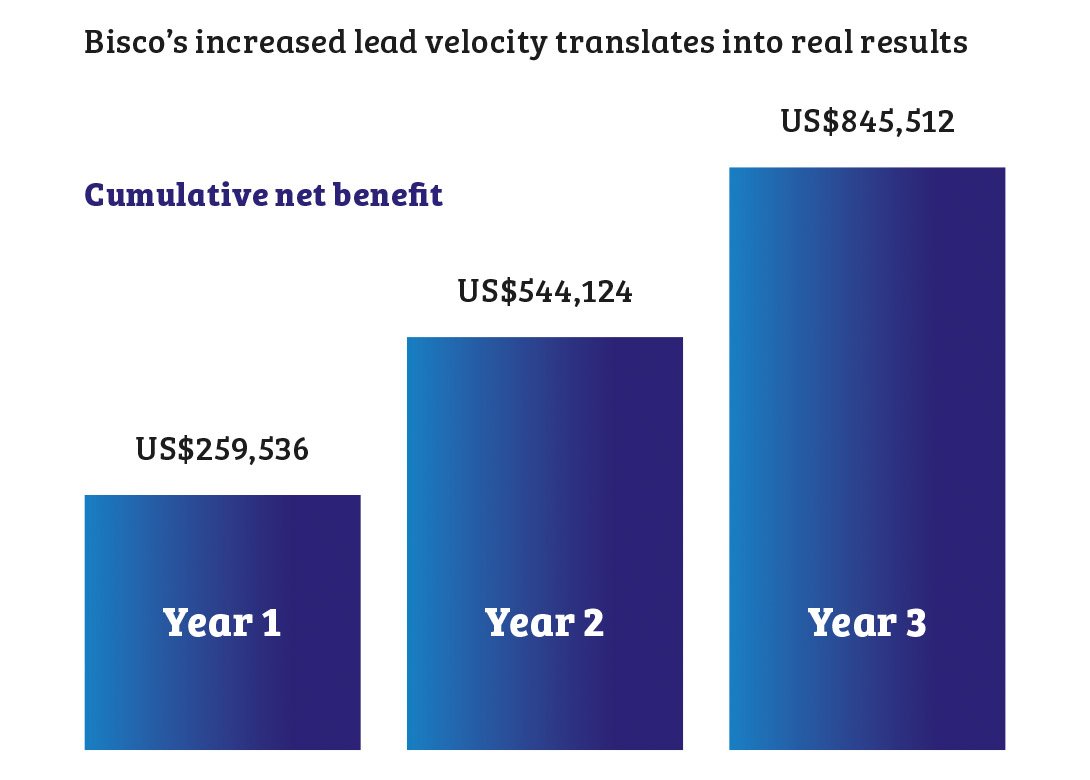
By Nina Church-Adams, senior VP, marketing at Act-On Software Inc
The fastener industry has been making waves in innovation in recent years as key developments in machinery and materials have led to fasteners continuously improving in quality and reliability. With continual quality improvements to the automotive and construction industries, demand for high-quality, robust, industrial fasteners have skyrocketed.
As we approach a technology first world, the need for fasteners will only keep on increasing. But how can fastener manufacturers leverage this spirit of innovation and continue to grow their sales? The answer lies in looking at technology advances on the marketing side that can dramatically increase both their marketing maturity levels, as well as their opportunities. However, the first step is marketing growth and putting systems in place that can drive a multi-channel digital engagement strategy. This initial step isn’t as hard as some people may think.
Traditionally, many fastener manufacturing marketeers have focused on lead volume as a key metric for growth. It’s easy to measure and work under the theory that the more leads that flow into the top of the sales funnel, the more that will flow through and convert into completed sales. However, more isn’t necessarily better. A laser focus on lead velocity, which is improving the conversion ratio for leads as they manoeuvre through the sales pipeline, yields weightier revenue returns while increasing sales confidence.
When marketing focuses on volume, sales ‘kisses a lot of frogs’ in hopes of finding hot leads in the mix. While there is a finite number of customers in the market for a product at any given time, there is a point of decreasing returns. When marketing sends sales too many frogs, they risk losing the sales department’s trust and with it the value of any leads they pass over.
This is where centralised digital marketing engines, known as ‘marketing automation platforms’, can help. The right digital marketing engine can dramatically improve marketing velocity – the rate at which leads convert as they travel through the sales funnel.
Here are four areas marketing automation can help fastener manufacturing marketers maximise success:
1) Increase in lead generation ROI
Whether a direct lead or a lead through the channel, fastener manufacturing marketeers today have to maximise their use of time and resources to prioritise prospective customer interest. Organisations that nurture leads experience an increase in lead generation ROI. After all, the velocity with which leads are converted to sales qualified leads increases efficiency while ensuring sales spends its time having high-quality conversations. For example, Bisco Industries, a manufacturer of electronic components and fasteners, implemented lead nurturing and benefited from a 1,400% lead generation ROI, winning the 2017 Nucleus Research ROI Award.
2) Segmentation, tailored content and lead nurturing
While over half of manufacturing marketeers don’t currently segment prospects at all, tailoring content to individual buyers increases lead conversion significantly. Velocity centric marketing encourages segmentation, nurturing each lead based on things like product interest, position, industry, and more. According to Wakefield Research, 77% of manufacturing organisations conduct more than 10 promotions a year with 46% running more than 21.
Case in point: Last year Bisco Industries began delivering near ‘real time’ content to prospects, tailored to how those prospects liked to engage with the company. In doing so, they nurtured prospects through the buying journey from initial engagement to quote request, to placing an order and setting up a Bisco credit account. These customers were then further nurtured, adding new product lines to their account. With this approach – tailoring content to different prospects, at different times in the buying process – Bisco increased its conversion rate by 1,285%. While Bisco only grew new opportunities by 4%, its enhanced conversions resulted in an average annual benefit to Bisco of US$301,388 (€260,746).
3) Increased sales efficiency increases sales impact
Even small, incremental increases in conversion rates can result in significant sales impact. For example, consider this sample chart (below) from the Bisco ROI study that illustrates the impact of an increased conversion rate while showing how much wasted effort is spent with clearly unqualified leads. A bonus side effect to an increase in velocity is that sales can reinvest previously wasted effort in upsell and cross-sell activities, making them even more productive.

4) Sales marketing alignment
To impact positive change in conversion across the sales funnel, it’s important for sales and marketing teams to work together and make sure they have common definitions for the sales and marketing process. For example: What is a lead, an MQL, SQL, opportunity, etc. With these definitions in hand, measure the lead conversion rate from each stage to the next. The key questions to ask are:
The more effective the funnel, the more efficient it is at converting at all levels, which can have big impacts on marketing and sales productivity – and most importantly – on sales outcomes. Segmentation and personalised nurturing campaigns will speed up velocity and increase the quality of leads to the sales organisation. This will in turn grow sales productivity, help them win more sales, and increase sales confidence in the marketing process.
About the author
Nina Church-Adams is senior vice-president marketing at Act-On Software where she manages the company’s global marketing function. Working on a global scale, Act-On Software specialises in adaptive marketing solutions that enable marketeers to create Adaptive Journeys™ using customer behaviours, preferences and data to intelligently guide the engagement strategy. The company operates in a number of industries including automotive, construction, manufacturing, technology and the fastener industry.

Having spent a decade in the fastener industry experiencing every facet – from steel mills, fastener manufacturers, wholesalers, distributors, as well as machinery builders and plating + coating companies, Claire has developed an in-depth knowledge of all things fasteners.
Alongside visiting numerous companies, exhibitions and conferences around the world, Claire has also interviewed high profile figures – focusing on key topics impacting the sector and making sure readers stay up to date with the latest developments within the industry.
Don't have an account? Sign Up
Signing up to Fastener + Fixing Magazine enables you to manage your account details.